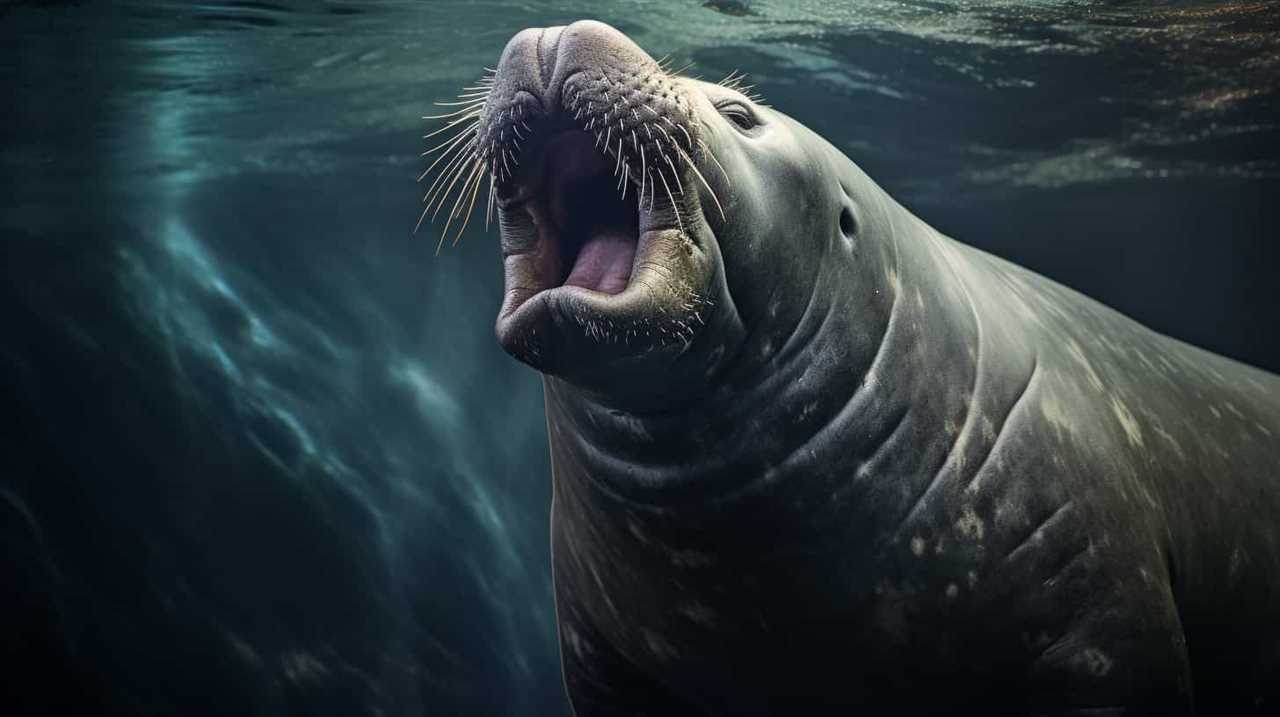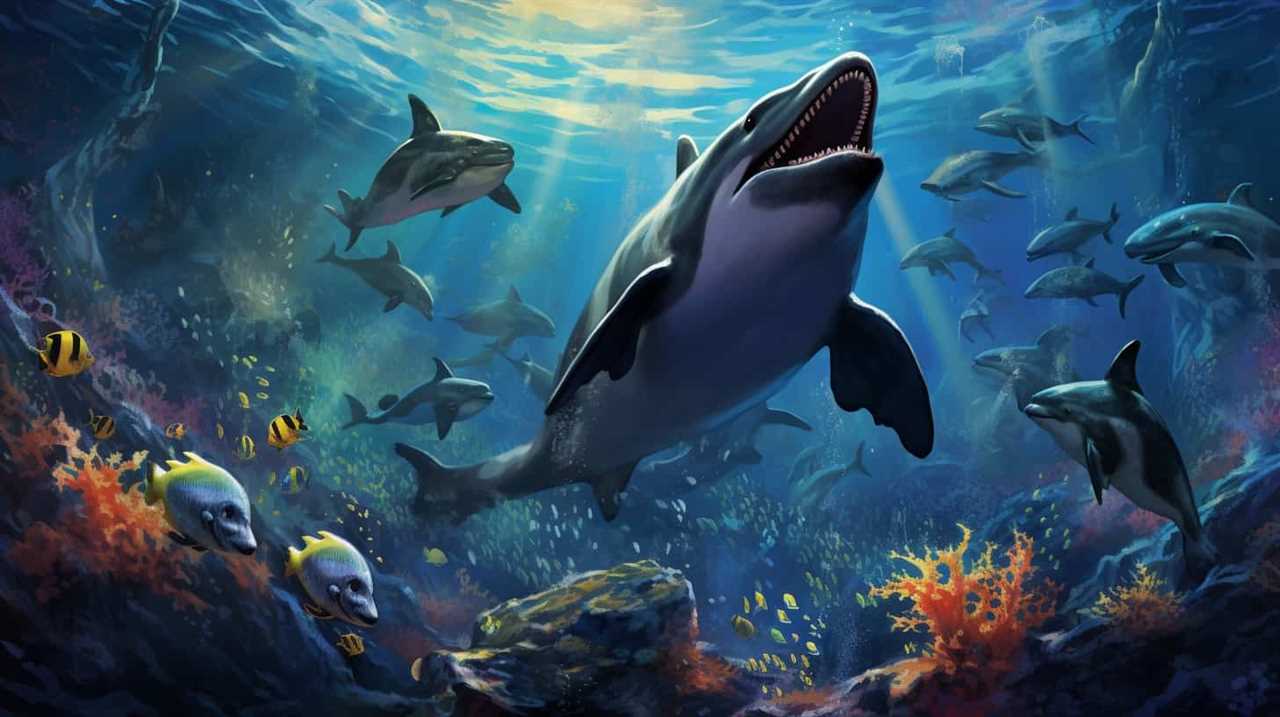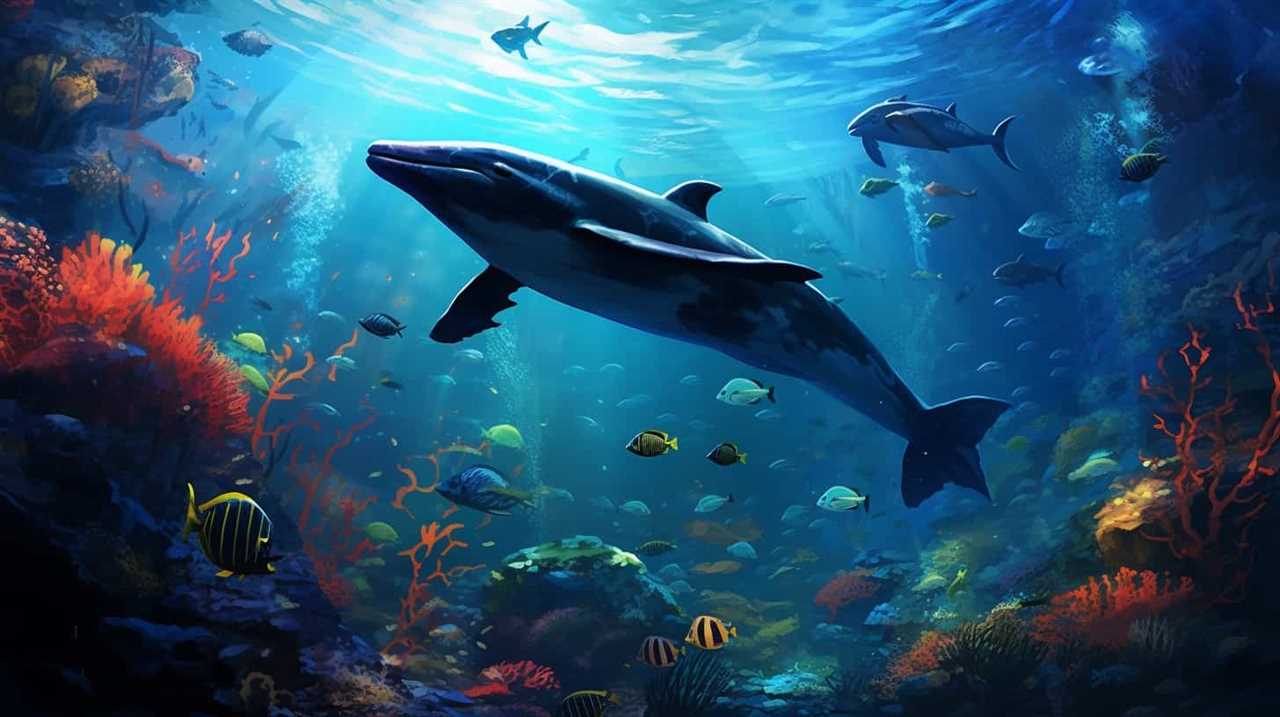As we delve into the depths of our oceans, we uncover a diverse array of sounds that are essential in forming marine ecosystems. Understanding the significance of underwater acoustics is crucial for the preservation of our oceans.
In this article, we explore why analyzing these sounds is crucial in our quest for marine conservation. From the tools and techniques used to record these soundscapes to their applications in marine research, join us in unraveling the mysteries of underwater acoustics and their vital role in protecting our precious seas.
Key Takeaways
- Underwater acoustics analysis provides valuable information about the underwater environment, including measuring and monitoring levels of noise pollution and identifying sources of noise pollution.
- Ocean sounds play a crucial role in ecosystems, facilitating communication, finding mates, and locating prey, and their disruption by human activities and noise pollution can have significant impacts on marine life and the balance of the ecosystem.
- Hydrophones and autonomous underwater vehicles (AUVs) equipped with advanced technology are fundamental tools for recording underwater acoustics, enabling precise data collection and high-quality audio recordings.
- Analyzing underwater soundscapes is essential for conservation efforts, as it provides information about ecosystem health, detects changes in biodiversity, identifies anthropogenic impacts, and informs the development of effective conservation measures.
Importance of Underwater Acoustics Analysis
Underwater acoustics analysis is essential for understanding and preserving the health of our seas through the use of sound waves. It provides us with valuable information about the underwater environment, including the presence of underwater noise pollution and its impact on marine life.
Noise pollution in the ocean is an increasing concern, caused by various human activities such as shipping, sonar systems, and offshore construction. This noise can have detrimental effects on marine organisms, disrupting their communication, feeding, mating, and migration patterns.

Through underwater acoustics analysis, we can accurately measure and monitor the levels of underwater noise pollution, identify its sources, and assess its potential impacts on marine life. This knowledge is crucial for implementing effective mitigation strategies and conservation measures to protect our marine ecosystems and ensure their long-term sustainability.
The Role of Ocean Sounds in Ecosystems
As we delve into the fascinating realm of underwater acoustics analysis, we uncover the pivotal role that ocean sounds play in ecosystems.
The role of marine animals in underwater acoustics can’t be overstated. They produce a variety of sounds for communication, finding mates, and locating prey. These sounds are crucial for their survival and are an integral part of their natural behavior.
Additionally, ocean sounds serve as a vital link between different species, facilitating interactions and maintaining the balance of the ecosystem. However, human activities have had a significant impact on ocean soundscapes. Noise pollution from shipping, drilling, and other human-made sources disrupts marine animals’ ability to communicate, navigate, and find food. This disturbance can lead to detrimental effects on the behavior, health, and ultimately, the survival of marine species.

Understanding the role of ocean sounds in ecosystems is essential for conservation efforts and ensuring the long-term health of our seas.
Transitioning into the subsequent section on tools and techniques for recording underwater acoustics, we explore the methods used to capture and analyze these crucial sounds.
Tools and Techniques for Recording Underwater Acoustics
To effectively capture and analyze underwater acoustics, we utilize a range of specialized tools and techniques. Underwater acoustics technology has advanced significantly in recent years, allowing us to gather precise data on the soundscape of our oceans.
Hydrophones are a fundamental tool in underwater acoustics research. These underwater microphones can be deployed at various depths to record sounds emitted by marine organisms or anthropogenic sources. To ensure accurate measurements, hydrophones are often equipped with calibrated sensors and digital recording systems to capture high-quality audio.

In addition to hydrophones, autonomous underwater vehicles (AUVs) have become invaluable for recording underwater acoustics. These robotic vehicles can be programmed to navigate specific areas and collect acoustic data over extended periods.
Analyzing Underwater Soundscapes for Conservation
For effective conservation efforts, we rely on analyzing the soundscapes of our seas. By understanding the underwater noise pollution and monitoring marine biodiversity, we can make informed decisions to protect and preserve our fragile marine ecosystems. Here are some key reasons why analyzing underwater soundscapes is crucial for conservation:
-
Assessing ecosystem health: Analyzing underwater soundscapes provides valuable information about the overall health of marine ecosystems. By monitoring the sounds produced by different species, we can gain insights into their abundance, behavior, and interactions.
-
Detecting changes in biodiversity: Soundscapes can help us identify changes in the composition and diversity of marine species. By analyzing the presence or absence of certain sounds, we can detect shifts in biodiversity and take appropriate conservation actions.

-
Identifying anthropogenic impacts: Underwater noise pollution from human activities, such as shipping, seismic surveys, and construction, can have detrimental effects on marine life. By analyzing soundscapes, we can quantify and understand the impacts of these activities, ultimately leading to better management strategies.
-
Informing conservation strategies: Analyzing underwater soundscapes allows us to develop effective conservation strategies. By understanding the acoustic preferences and communication patterns of different species, we can design protected areas and implement measures to mitigate the negative impacts of human activities.
Analyzing underwater soundscapes is a powerful tool that enables us to gain a comprehensive understanding of marine ecosystems, assess their health, and make informed decisions to protect and conserve them.
Applications of Underwater Acoustics in Marine Research
Continuing our analysis of underwater soundscapes, we frequently employ underwater acoustics in marine research to gain valuable insights into the complexities of our oceans. One key application of underwater acoustics in marine research is in the study of underwater communication among marine organisms. By capturing and analyzing the sounds produced by marine animals, we can better understand their communication patterns, social structures, and even their reproductive behaviors. This knowledge is crucial for the conservation and management of marine ecosystems.

Another important application of underwater acoustics in marine research is the assessment of the impact of human activities on marine life. Anthropogenic noise from sources such as shipping, seismic surveys, and construction can have detrimental effects on marine animals, disrupting their communication, navigation, and feeding behaviors. By using underwater acoustics, we can monitor and measure these impacts, allowing us to develop strategies to mitigate the negative effects of human activities on marine organisms.
Frequently Asked Questions
How Does Underwater Acoustics Analysis Contribute to Climate Change Research?
Underwater acoustics analysis contributes to climate change research by providing valuable data on ocean conservation and marine resource management. It helps us understand how changing soundscapes impact marine ecosystems and aids in assessing the effects of climate change on underwater habitats.
What Are the Potential Negative Impacts of Human-Generated Noise on Marine Life?
Negative impacts of human-generated noise on marine life include stress, hearing damage, and disruption of communication and navigation. Mitigation measures, such as quieter vessel designs and stricter regulations, are crucial to protecting our fragile marine ecosystems.
Can Underwater Acoustics Analysis Help in Monitoring and Preventing the Spread of Invasive Species?
Underwater acoustics analysis plays a crucial role in monitoring and preventing the spread of invasive species. It helps us understand their impact on coral reef conservation and fish population dynamics, aiding in effective management strategies.

How Is Underwater Acoustics Analysis Used in Understanding the Behavior and Migration Patterns of Marine Mammals?
Underwater acoustics analysis allows us to gain valuable insights into the behavior and migration patterns of marine mammals. By studying their vocalizations and movements, we can better understand and protect these incredible creatures.
Are There Any Legal Regulations or Guidelines in Place Regarding Underwater Noise Pollution?
Legal regulations and guidelines are in place to address underwater noise pollution. We actively monitor and prevent negative impacts of human-generated noise on marine life. This is crucial for understanding behavior, migration patterns, and protecting marine mammals from invasive species.
Conclusion
In conclusion, the analysis of underwater acoustics is essential for the preservation and understanding of our oceans.
Like the delicate threads of a tapestry, the intricate soundscape of the underwater world weaves together the diverse organisms and ecosystems that rely on it.

Through advanced tools and techniques, we can unravel the secrets hidden within these underwater symphonies, informing conservation efforts and advancing marine research.
Let’s continue to explore and protect the mesmerizing depths of our seas through the power of sound.










